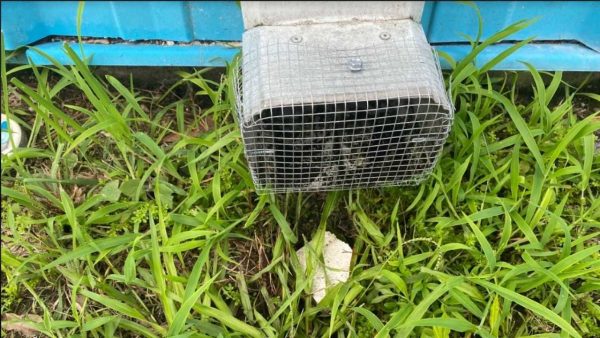Comprehensive Residential Pest Control Service in Port Charlotte
Comprehensive Residential Pest Control Service in Port Charlotte
Blog Article
Comprehensive Overview to Understanding Bug Control Methods and Their Treatment
Recognizing parasite control approaches is essential for effective administration of unwanted organisms that position risks to health, agriculture, and building. This comprehensive guide will explore numerous approaches, including chemical options, organic strategies, and mechanical techniques, all under the umbrella of Integrated Pest Administration (IPM) As we take a look at these approaches, it becomes significantly clear that the choice of method can dramatically impact both human passions and eco-friendly balance. What aspects should be considered when selecting the ideal bug control technique for a details scenario? The solution may cause even more sustainable techniques than one might at first think.
Summary of Bug Control Methods
Bug control techniques include a selection of techniques developed to handle and eliminate undesirable organisms that can damage human wellness, agriculture, and home. Reliable pest monitoring is important for keeping the stability of ecological communities and guaranteeing the security of food products. These approaches can be broadly categorized into three key approaches: cultural, mechanical, and biological controls.

Cultural control includes customizing farming techniques or ecological problems to lower pest facility and reproduction. Mechanical control depends on physical obstacles or devices to stop insect accessibility or straight eliminate them.
Biological control uses natural killers, parasites, or pathogens to manage pest populations. This method emphasizes eco-friendly equilibrium and can consist of introducing advantageous insects, such as ladybugs or predative nematodes, to take care of bug existence.
Integrated insect monitoring (IPM) integrates these techniques, making use of an alternative approach that highlights prevention, monitoring, and liable administration. By using a blend of these approaches, insect control can be extra sustainable and efficient, lessening dependence on chemical interventions while guarding human health and wellness and the setting.

Chemical Parasite Control Solutions
A variety of chemical parasite control solutions are readily available, supplying efficient options for handling parasite populaces when other techniques may fail. These options mainly consist of insecticides, herbicides, fungicides, and rodenticides, each designed to target particular bugs while minimizing injury to non-target organisms.
Pesticides are specifically effective versus a variety of pests, including ants, roaches, and termites, and can be identified as get in touch with or systemic agents. Get in touch with insecticides kill parasites on contact, while systemic insecticides are absorbed by plants, making them harmful to bugs that feed on them. Herbicides are made use of to regulate undesirable vegetation, whereas fungicides are crucial for taking care of fungal conditions that can harm crops and decorative plants.
In addition, incorporated bug administration (IPM) concepts need to be used, integrating chemical options with cultural, mechanical, and organic strategies for lasting pest control. This holistic technique not just enhances pest management efficiency yet likewise lowers possible environmental effects linked with chemical use.
Biological Parasite Control Strategies
Organic insect control strategies offer an eco-friendly choice to chemical methods by utilizing all-natural predators, bloodsuckers, or pathogens to manage bug populations. This strategy leverages the eco-friendly connections in between microorganisms, promoting a balanced community while minimizing chemical residue click this in the setting.
Among one of the most usual organic control approaches includes the intro of natural adversaries. Ladybugs are used to manage aphid populations, while parasitic wasps can target caterpillars and various other parasites. These all-natural killers properly lower pest numbers without damaging advantageous bugs.
In addition, microbial agents such as germs, fungi, and viruses are made use of to infect and eliminate details pests. Bacillus thuringiensis (Bt), a normally happening microorganism, is commonly used to control caterpillars and various other larvae, showcasing the effectiveness of microbial insect control.

Physical and Mechanical Methods
Regularly used in integrated bug management techniques, physical and mechanical approaches work as efficient tools for controlling pest populaces without the usage of chemicals. These techniques count on physical barriers, catches, and various other mechanical devices to avoid or get rid of pests, making them eco-friendly alternatives.
Physical techniques include the usage of barriers such as insect netting, screens, or row covers that physically block pests from accessing plants. This is especially useful in farming settings where plant protection is essential. Additionally, environment manipulation, such as removing debris and standing water, can lower pest reproducing sites, thereby lessening problems.
Mechanical methods include catches, which can be developed to record particular pests. Sticky catches and scent traps prevail instances that tempt and keep pests, assisting in surveillance and control. Vacuuming is an additional mechanical approach, effective for removing bugs from interior settings, particularly in situations of infestations.
Preventative Bug Monitoring Approaches
Efficient preventative pest administration approaches are important for maintaining healthy atmospheres and minimizing pest-related issues before they occur (Pest Control in Port Charlotte, FL). These techniques focus on aggressive procedures that lower the probability of insect infestations by attending to the origin

One more vital strategy includes correct landscaping techniques (Pest Control in Port Charlotte, FL). Maintaining plant life trimmed and away from structures can decrease harborage locations for pests. Implementing incorporated insect monitoring (IPM) techniques that consist of monitoring pest populaces and utilizing organic controls can cultivate a balanced environment that normally suppresses pest numbers.
Education and learning and training for personnel and citizens on identifying very early indicators of parasite activity are likewise vital components of a reliable preventative program. By promoting an atmosphere of understanding and watchfulness, organizations and property owners can greatly improve their bug administration efforts and guard their areas versus future problems.
Conclusion
In conclusion, effective insect control requires a complex technique that incorporates chemical, biological, and mechanical approaches. Utilizing an Integrated Parasite Monitoring (IPM) framework enables the sustainable monitoring of bugs while minimizing ecological impact. Preventative methods even more boost the efficiency of these techniques, making certain long-lasting security of health and wellness, agriculture, and property. Inevitably, a thorough understanding of these diverse bug control strategies is necessary for attaining successful results in pest administration efforts.
Report this page